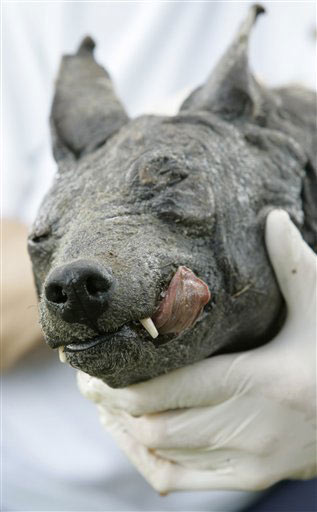'Ugly Beast' Found in Texas: Another Chupacabra?

A rancher in Fort Hood, Texas, southwest of Fort Worth, found a strange-looking animal in his barn. The hairless (or nearly hairless) beast was shot by an animal control officer who described it as "ugly, real ugly." From there, things just get stranger.
Samples of the body were taken for DNA analysis, though many people believe it is the blood-sucking beast "el chupacabra," the world's best known monster after Bigfoot and the Loch Ness monster.
The chupacabra first appeared in Puerto Rico in 1995 and sightings soon spread to other Spanish-speaking countries and areas. No hard evidence of its existence has been found — though about a half-dozen alleged chupacabra carcasses have been found in Texas.
Tales of the Texas Chupacabra
In May 2004, a rancher near the Texas town of Elmendorf noticed a strange animal eating mulberries under a tree on his property. The thin creature had large ears and a bluish cast, and was nearly hairless. The rancher shot the beast, which because of its odd look was thought by many to be the chupacabra. Genetic testing later revealed it to be a domestic dog.
The most famous Texas chupacabra was found in 2007 when a strange, nearly hairless creature was discovered near a ranch outside the town of Cuero. News spread worldwide, though DNA sequencing revealed it was a Texas coyote that may have been part wolf.
In July 2009 a man living near Blanco, Texas, found a strange dead animal. It weighed about 80 pounds, had four legs and a tail, and resembled a coyote except for its dark chocolate color and the fact that it was mostly hairless. It, too, was thought to be a chupacabra, and even exhibited as one in a creationist museum.
Sign up for the Live Science daily newsletter now
Get the world’s most fascinating discoveries delivered straight to your inbox.
In January of this year, also not far from Fort Worth, golf course workers found what they thought might be the carcass of the chupacabra. The strange four-legged animal was ugly and mostly hairless, and didn't look like anything the men had ever seen before. Rumors and news spread that another Texas chupacabra had been found, though soon a biologist with the Texas Parks and Wildlife Department examined the carcass and concluded that the animal was in fact a dead, hairless raccoon.
What's going on?
In most cases the animals are hairless as the result of a disease called sarcoptic mange; other times the creatures have been identified as a rare hairless dog breed called the Xolo.
So what will DNA tests of the latest chupacabra, making news this week in Texas, reveal?
If history is any guide, the Fort Hood monster will most likely be revealed to belong to the Canidae family, which includes dogs, coyotes, foxes, and wolves. Or, if the animal is smaller than an ordinary dog, it might be a raccoon.
Even if the genetic testing came back "unknown" or "inconclusive," such a result would not necessarily indicate that the mystery creature is a chupacabra — simply that the sample did not match other, known index samples, or that the sample was too degraded to derive enough quality DNA for testing.
The word "chupacabra" originally described a bipedal, spiky-spined vampiric monster said to drain blood from goats and other livestock ("chupacabra" means goat-sucker in Spanish). However in recent years the chupacabra label has simply become a catch-all name for just about any strange, hairless creature that can't be immediately identified by whoever first sees or finds it.
Benjamin Radford is managing editor of the Skeptical Inquirer science magazine. His new book is Scientific Paranormal Investigation; this and his other books and projects can be found on his website. His Bad Science column appears regularly on LiveScience.










